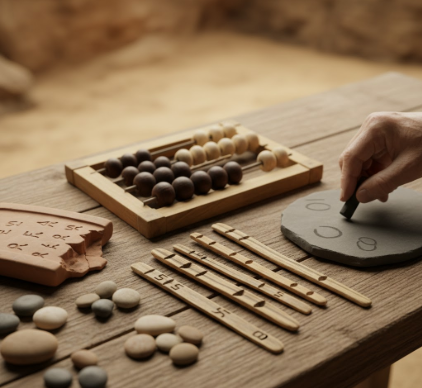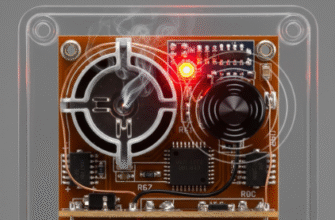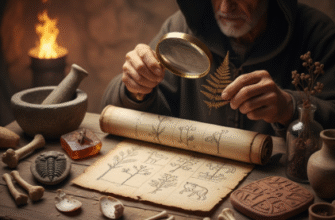Imagine a world utterly devoid of numbers. Not just the complex equations of physicists, but the simple act of counting sheep, or days, or even the fingers on your hand. It seems almost impossible, doesn’t it? Numbers are so deeply woven into the fabric of our reality, structuring our time, our economies, our understanding of the universe itself. Yet, humanity didn’t always possess this powerful tool. The ability to count, to quantify, wasn’t handed down from on high; it was a gradual, painstaking process of discovery and invention, a story stretching back to the very dawn of human consciousness.
The First Stirrings: More Than One
The earliest glimmers of numerical understanding likely weren’t about specific numbers like ‘three’ or ‘five’. Instead, they were probably about recognizing a fundamental difference: the difference between ‘one’ and ‘many’. Early humans needed practical ways to keep track of things essential for survival. How many members were in the hunting party? How many predators were nearby? How many days had passed since the last rain? While they didn’t have words or symbols for precise quantities, they understood the concept of quantity itself.
The most basic method, one that predates even language perhaps, was simple comparison or one-to-one correspondence. Does everyone have a spear? Match each person to a spear. Are all the sheep back in the pen? Maybe compare the returning flock to a collection of pebbles set aside earlier. This intuitive matching laid the groundwork for quantification.
Making Marks: The Tally
The next leap involved creating physical records. Instead of relying purely on memory or temporary collections of objects, people began making marks. Archaeologists have found ancient bones and pieces of wood etched with notches, dating back tens of thousands of years. The Ishango bone, found in Central Africa and dated to around 20,000 BCE, is a famous example, featuring grouped notches that some speculate represent more than simple counting – perhaps even early multiplication or prime number awareness, though this is debated.
Verified Evidence: Archaeological finds like the Ishango Bone and numerous other notched artifacts provide concrete evidence of early tallying systems. These marks represent one of the oldest known forms of data recording. While their exact meaning is sometimes debated, their function as counting aids is widely accepted by researchers.
These tally marks were revolutionary. They allowed information about quantity to persist over time and be shared. A notch on a stick could represent a killed animal, a passing day, or a debt owed. Grouping these notches (often in fives, perhaps linked to fingers) made larger quantities easier to grasp visually. It was the beginning of externalizing mathematical thought.
Nature’s Calculator: Fingers and Toes
It seems almost inevitable that humans would turn to their own bodies for counting aids. We carry a convenient, readily available set of counters at the ends of our arms and legs: fingers and toes. This anatomical reality profoundly influenced the development of number systems across the globe.
Using fingers is intuitive. One finger, one item. Two fingers, two items. Up to ten is straightforward. This naturally led to the development of
base-10 (decimal) systems, the system most of the world uses today. It’s no coincidence that the word “digit” refers both to a finger/toe and a numerical symbol.
However, some cultures went further, incorporating toes into their counting, leading to
base-20 (vigesimal) systems. Remnants of this exist in languages like French, where 80 is ‘quatre-vingts’ (four twenties), or in the counting systems of Mesoamerican cultures like the Maya, who developed a sophisticated vigesimal system.
- Base-10 (Decimal): Based on ten fingers. Widely adopted globally (e.g., ancient Egypt, basis of Hindu-Arabic system).
- Base-20 (Vigesimal): Based on ten fingers and ten toes. Used by cultures like the Maya and Aztecs; linguistic traces remain elsewhere.
- Other Bases: Some cultures used base-12 (perhaps linked to finger joints) or even base-60 (Sumerians/Babylonians), showing diverse approaches before standardization.
The use of body parts was a crucial step towards abstraction. While still tied to the physical, it standardized the counting units within a community.
From Concrete to Abstract: The Idea of ‘Three’
Moving from tally marks and finger-counting to abstract numbers was a huge conceptual leap. It required separating the *idea* of a number from the specific objects being counted. The understanding that ‘three’ could apply equally to three rocks, three trees, or three days – that ‘threeness’ was a concept in itself – took time to develop.
Language played a vital role. As societies grew more complex, the need arose for number words. Initially, these words might have been closely tied to the objects (perhaps different words for ‘two birds’ versus ‘two stones’). But gradually, more abstract terms emerged. This process allowed for communication about quantities without needing the objects present and paved the way for arithmetic.
Civilizations Rise, Numbers Evolve
With the rise of agriculture, cities, and trade, the need for more sophisticated number systems exploded. Simple tallies weren’t sufficient for managing granaries, calculating taxes, surveying land, or tracking astronomical cycles.
The Sumerians and later the Babylonians in Mesopotamia (modern-day Iraq) developed one of the earliest known writing systems, cuneiform, pressed onto clay tablets. They also created a complex number system around 3000 BCE. While they had symbols for units and tens, they famously used a
base-60 (sexagesimal) system, likely inherited from an earlier culture combining base-10 and base-6. We still see the legacy of base-60 today in our measurement of time (60 seconds in a minute, 60 minutes in an hour) and angles (360 degrees in a circle).
Crucially, the Babylonians developed a positional notation system. Like our modern system, the value of a symbol depended on its position. However, they initially lacked a symbol for zero, which could lead to ambiguity. Imagine trying to distinguish 61 from 3601 if you couldn’t put a zero in the middle!
Egypt: Hieroglyphs and Base-10
The ancient Egyptians, around the same time, developed their own system using hieroglyphs. It was a base-10 system but not positional. They had distinct symbols for powers of ten (1, 10, 100, 1000, etc.). To write a number like 345, they would simply draw the symbol for 100 three times, the symbol for 10 four times, and the symbol for 1 five times. The order didn’t strictly matter, though they often grouped them. While visually impressive, this additive system made complex calculations cumbersome.
Rome: Letters as Numbers
Roman numerals (I, V, X, L, C, D, M) are familiar to many, often used for clocks, outlines, or regnal numbers. This system, derived partly from Etruscan practices, was also essentially additive, with a subtractive element introduced later (like IV for 4 instead of IIII, or IX for 9 instead of VIIII). While functional for recording numbers and simple addition/subtraction, Roman numerals were notoriously difficult for multiplication and division, hindering complex mathematical development.
The Game Changer: Invention of Zero
Perhaps the single most important development in the story of numbers was the concept of
zero. While the Babylonians eventually used a placeholder symbol to indicate an empty position, the idea of zero as a number in its own right – something you could calculate with – emerged significantly later.
A Revolution in Thought: The invention of zero, primarily credited to Indian mathematicians around the 5th century CE, was transformative. It wasn’t just a placeholder; it became a number representing ‘nothingness’ or ‘null value’. This concept was crucial for developing efficient positional number systems and enabling advanced algebra and calculus.
Indian mathematicians integrated zero into their developing base-10 positional system. This system used unique symbols for the numbers 1 through 9, plus the groundbreaking zero (often represented initially as a dot or small circle). Now, numbers like 6, 60, and 600 could be clearly distinguished using the same digits, simply by changing their position relative to the zero placeholder.
The Spread of Our Modern Numbers
This elegant and efficient system, often called the
Hindu-Arabic numeral system, didn’t stay confined to India. Arab and Persian scholars encountered these numerals through trade and scientific exchange. Mathematicians like Al-Khwarizmi (whose name gives us the word “algorithm”) wrote influential texts in the 9th century CE explaining the Indian system of calculation.
These texts were eventually translated into Latin and began to circulate in Europe. The Italian mathematician Fibonacci, famous for his sequence, played a key role in popularizing the Hindu-Arabic numerals in the West through his book “Liber Abaci” (Book of Calculation) in 1202. He demonstrated their superiority over Roman numerals for commercial bookkeeping and calculation.
However, adoption wasn’t immediate. There was resistance; some merchants distrusted the new numerals, finding them easier to alter than Roman numerals, and some authorities even banned their use for a time. But the sheer computational power and efficiency of the positional base-10 system with zero were undeniable. By the late Middle Ages and the Renaissance, it had largely replaced older systems across Europe and subsequently spread worldwide.
Numbers Today: An Unending Story
From hesitant scratches on bone to the digital bits underpinning our modern world, the journey of numbers is a testament to human ingenuity and our enduring quest to understand and organize the world around us. We learned to count out of necessity – to track possessions, measure land, mark time. Along the way, we developed abstract concepts, invented ingenious notations, and unlocked the power of calculation.
The simple digits 0 through 9, born from millennia of diverse cultural efforts, now form the universal language of science, technology, and commerce. The story of how we learned to count is more than just a history lesson; it’s the story of how we learned to think abstractly, solve complex problems, and build the sophisticated world we inhabit today. And the story isn’t over – mathematics continues to evolve, pushing the boundaries of what we can quantify and comprehend.








